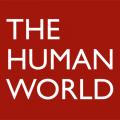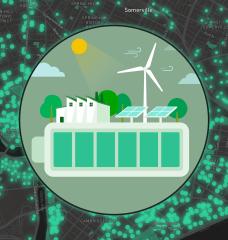
Prize awarded to Nordhaus "for pioneering development of an “integrated assessment model” representing “the global interplay between the economy and the climate.”
The 2018 Nobel prize in economic sciences to MIT alumnus William Nordhaus PhD '67 recognizes how economic forces can help curb climate change. A premise of Nordhaus's research: the environment is a public good, shared by all — and yet it is not currently paid for in any adequate way.
Story by Peter Dizikes | 8 October 2018, MIT News
William D. Nordhaus PhD ’67, a scholar known for his work on the long-term interaction of climate change and the economy, will share the 2018 Nobel Prize in economic sciences, the Royal Swedish Academy of Sciences announced today. Nordhaus, a professor of economics at Yale University, shares the award with Paul M. Romer of New York University's Stern School of Business, who also did graduate work at MIT.
The academy announced that the two economists have “significantly broadened the scope of economic analysis by constructing models that explain how the market economy interacts with nature and knowledge.”
In Nordhaus’ case, the academy cited his pioneering development of an “integrated assessment model” representing “the global interplay between the economy and the climate.” Nordhaus has refined multiple iterations of his model. He has also written about climate and economics for a broad audience, as the author of several books.
Nordhaus completed his PhD dissertation at MIT under the supervision of Robert M. Solow, himself the 1987 winner of the Nobel Prize in economic sciences. Multiple Nobel Prize winners in economics, including Nordhaus, Peter Diamond, George Akerlof, and Joseph Stiglitz, have had Solow as their principal advisor in MIT’s graduate program in economics, located in the School of Humanities, Arts, and Social Sciences.
Nordhaus is the 37th MIT alumnus to win a Nobel Prize and 90th winner with a connection to MIT. Five people have won the Nobel Prize in economic sciences while serving as members of the MIT faculty; another 11 MIT alumni, including Nordhaus, have won the prize. An additional seven former MIT faculty have won the Nobel Prize in economic sciences.
The Prize in Economic Sciences | Press Release
Excerpt:
Integrating innovation and climate with economic growth
William D. Nordhaus and Paul M. Romer have designed methods for addressing some of our time’s most basic and pressing questions about how we create long-term sustained and sustainable economic growth.
At its heart, economics deals with the management of scarce resources. Nature dictates the main constraints on economic growth and our knowledge determines how well we deal with these constraints. This year’s Laureates William Nordhaus and Paul Romer have significantly broadened the scope of economic analysis by constructing models that explain how the market economy interacts with nature and knowledge.
Technological change – Romer demonstrates how knowledge can function as a driver of long-term economic growth. When annual economic growth of a few per cent accumulates over decades, it transforms people’s lives. Previous macroeconomic research had emphasised technological innovation as the primary driver of economic growth, but had not modelled how economic decisions and market conditions determine the creation of new technologies. Paul Romer solved this problem by demonstrating how economic forces govern the willingness of firms to produce new ideas and innovations.
Romer’s solution, which was published in 1990, laid the foundation of what is now called endogenous growth theory. The theory is both conceptual and practical, as it explains how ideas are different to other goods and require specific conditions to thrive in a market. Romer’s theory has generated vast amounts of new research into the regulations and policies that encourage new ideas and long-term prosperity.
Climate change – Nordhaus’ findings deal with interactions between society and nature. Nordhaus decided to work on this topic in the 1970s, as scientists had become increasingly worried about the combustion of fossil fuel resulting in a warmer climate. In the mid-1990s, he became the first person to create an integrated assessment model, i.e. a quantitative model that describes the global interplay between the economy and the climate. His model integrates theories and empirical results from physics, chemistry and economics. Nordhaus’ model is now widely spread and is used to simulate how the eco- nomy and the climate co-evolve. It is used to examine the consequences of climate policy interventions, for example carbon taxes.
The contributions of Paul Romer and William Nordhaus are methodological, providing us with fundamental insights into the causes and consequences of technological innovation and climate change. This year’s Laureates do not deliver conclusive answers, but their findings have brought us considerably closer to answering the question of how we can achieve sustained and sustainable global economic growth.






